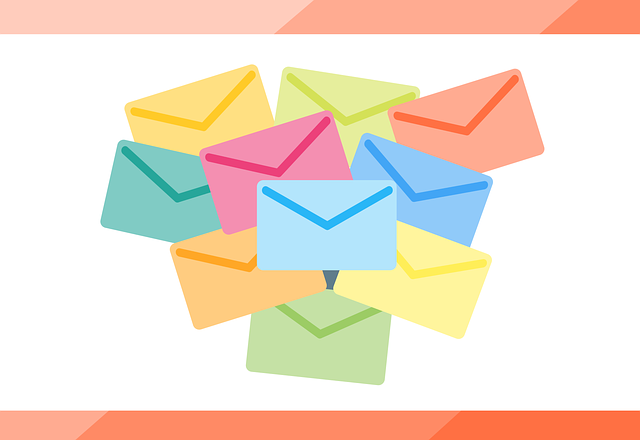Email marketing is like a symphony, with each element playing a crucial role in creating a harmonious experience for your audience. Just as a conductor guides musicians to create a beautiful melody, your email design conducts your subscribers towards conversions. It sets the stage, captures attention, and orchestrates the journey from opening an email to taking action.
In this article, we will delve into the impact of email design on conversion rates. We will analyze the importance of capturing attention through effective layout and organization. We will explore how color schemes can influence your audience’s decision-making process. We will uncover the power of imagery in conveying your message and evoke emotions. And we will discuss the optimization of call-to-action buttons for higher conversion rates.
But it doesn’t stop there. We will also guide you through measuring and improving conversion rates in your email marketing campaigns. By the end, you’ll have a symphony of insights that will help you compose emails that not only captivate, but also convert.
So grab your conductor’s baton and let’s dive into the world of email design and its impact on conversion rates.
Key Takeaways
- Investing time and effort into crafting visually captivating email design yields significant results.
- Well-designed emails with visually appealing designs have higher click-through rates and conversion rates.
- A/B testing different color combinations helps identify the most effective color scheme for higher conversion rates.
- Tailoring emails to individual recipients and delivering targeted content increases engagement and conversion rates.
Importance of Email Design in Capturing Attention
Email design plays a crucial role in grabbing people’s attention and boosting conversion rates. With the average person receiving dozens of emails daily, it’s essential to stand out from the crowd. Capturing the user’s interest starts with attention-grabbing techniques that make your email visually appealing and compelling.
A well-designed email can instantly catch the eye, enticing the reader to delve deeper into the message. Incorporating eye-catching colors, bold fonts, and engaging images can significantly increase the chances of your email being read and acted upon. Studies have shown that emails with visually appealing designs have higher click-through rates and conversion rates.
So, it’s clear that investing time and effort into crafting a visually captivating email design can yield significant results. Now, let’s explore how the layout and organization of email design further contribute to conversion rates.
Layout and Organization of Email Design
When organizing your email layout, make sure to prioritize a clear and visually appealing structure that captures the reader’s attention. Did you know that 65% of recipients prefer emails that are visually engaging and easy to navigate? To achieve this, it is crucial to consider user segmentation and responsive design. User segmentation allows you to tailor the layout based on the recipient’s preferences and behaviors, increasing the chances of conversion. Responsive design ensures that your email adapts seamlessly to different devices, enhancing the user experience. To illustrate the importance of layout and organization, consider the following 3 column and 3 row table:
| Column 1 | Column 2 | Column 3 |
|---|---|---|
| Eye-catching | Easy to read | Clear call-to-action |
| Consistent branding | Use of white space | Visual hierarchy |
| Personalization | Mobile-friendly | Minimal distractions |
By implementing these strategies, you can significantly impact conversion rates. Now, let’s delve into the impact of color scheme on conversion rates.
Impact of Color Scheme on Conversion Rates
Using the right color scheme can captivate your audience and dramatically influence their decision-making process. Color psychology plays a crucial role in email design as different colors evoke different emotions and reactions.
A/B testing is a valuable tool to determine the impact of color schemes on conversion rates. By testing different color combinations, you can gather data on which colors resonate best with your target audience. For example, warm colors like red and orange can create a sense of urgency, while cool colors like blue and green can instill a sense of trust and calmness.
Analyzing the results of A/B tests will help you identify the most effective color scheme for your emails, ultimately increasing conversion rates.
Transitioning into the subsequent section about effective use of imagery in email design, visuals can further enhance the impact of your color scheme and drive engagement.
Effective Use of Imagery in Email Design
Imagery in your emails can be as refreshing as a cool breeze on a hot summer day, captivating your audience and driving their engagement. When it comes to email design, incorporating the right images can make a significant impact on your conversion rates.
One effective way to enhance engagement is through the use of animation in email design. Animated images can capture attention and create a sense of excitement, leading to higher click-through rates and conversions.
Additionally, personalization in email imagery can also be highly effective. By using images that are tailored to each recipient’s preferences or past interactions, you can create a more personalized and engaging experience.
So, don’t underestimate the power of imagery in your email campaigns. Now, let’s explore how optimizing call-to-action buttons can further boost your conversion rates.
Optimizing Call-to-Action Buttons for Higher Conversions
To maximize your results, it’s crucial to fine-tune your call-to-action buttons for optimal conversions. Improving button placement is key to increasing click-through rates.
A/B testing button copy allows you to find the most compelling and persuasive language that resonates with your audience. Here are five strategies to optimize your call-to-action buttons:
- Use contrasting colors to make your buttons stand out and grab attention.
- Keep the copy short, clear, and action-oriented to encourage immediate click-through.
- Experiment with different button sizes to find the optimal balance between visibility and usability.
- Incorporate urgency by adding a sense of time limitation or scarcity in the button copy.
- Make sure your buttons are mobile-friendly and easily clickable on smaller screens.
By implementing these strategies, you can enhance the effectiveness of your call-to-action buttons and drive higher conversion rates.
Transitioning into the subsequent section, measuring and improving conversion rates in email marketing campaigns requires a comprehensive analysis of various factors.
Measuring and Improving Conversion Rates in Email Marketing Campaigns
It’s absolutely mind-boggling how email marketing campaigns can sometimes feel like playing a guessing game, trying to figure out what works and what doesn’t when it comes to getting those coveted conversions. The key to success lies in measuring campaign success and continuously improving conversion rates.
By analyzing data and metrics, you can gain valuable insights into what strategies are effective and what areas need improvement. One important aspect to consider is personalization techniques. Tailoring emails to individual recipients can significantly increase engagement and conversion rates. By segmenting your audience and delivering targeted content, you can create a more personalized experience that resonates with your subscribers.
Additionally, A/B testing different elements, such as subject lines, layouts, and visuals, allows you to identify the most effective design choices for driving conversions.
Remember, data-driven analysis and continuous optimization are crucial for maximizing the impact of your email marketing campaigns.
Frequently Asked Questions
How can I improve the deliverability of my emails?
To improve the deliverability of your emails and increase open rates, focus on optimizing key factors. These factors include sender reputation, email authentication, and list hygiene.
Ensure that your email content is relevant and engaging, as this can positively impact engagement rates. Implement best practices such as personalization, A/B testing subject lines, and utilizing segmentation. These practices can further enhance open rates and overall engagement.
Regularly monitor email performance metrics to gain valuable insights for continuous improvement.
What is the ideal length for subject lines in email marketing?
The ideal subject line length for email marketing is 41 characters. This statistic is crucial for email subject line optimization.
Shorter subject lines tend to have higher open rates, as they’re more likely to be fully displayed on mobile devices. Additionally, concise subject lines create a sense of urgency and intrigue, prompting recipients to open the email.
Therefore, it’s important to keep subject lines concise and impactful to maximize email marketing success.
Are there any best practices for personalizing email content?
To effectively personalize email content, employ various personalization techniques such as using the recipient’s name, segmenting your audience based on demographics or behavior, and leveraging dynamic content.
By tailoring your message to individual preferences, you can increase engagement and conversion rates. Research shows that personalized emails have a higher open rate and click-through rate than generic ones.
Incorporating dynamic content, like product recommendations or personalized offers, can further enhance the effectiveness of your email campaigns.
How can I optimize my email design for mobile devices?
To optimize your email design for mobile devices, focus on mobile responsiveness and user experience. Ensure that your email is easily readable and accessible on smaller screens by using a responsive design.
Keep the email layout simple and use a single column format to avoid horizontal scrolling. Use clear and concise messaging with a strong call to action to improve conversion rates.
Test your emails on various mobile devices to ensure optimal performance.
What are some effective strategies for A/B testing email campaigns?
To effectively A/B test your email campaigns and maximize their effectiveness, you need to follow proven strategies.
Start by segmenting your audience and testing different variables like subject lines, call-to-action buttons, or email layouts.
Ensure your test groups are large enough to generate statistically significant results.
Use clear and measurable metrics to evaluate the performance of each variant.
Continuously refine and iterate your strategies based on data-driven insights to improve your conversion rates.
Conclusion
You’ve made it to the end of this data-driven analysis on the impact of email design on conversion rates. By understanding the importance of captivating layouts, organized structures, enticing color schemes, and compelling imagery, you’re now equipped to optimize your email campaigns for higher conversions.
Remember to fine-tune your call-to-action buttons and continually measure and improve your conversion rates.
So, go forth and let your emails shine like a dazzling sunrise, capturing the attention and hearts of your audience.







